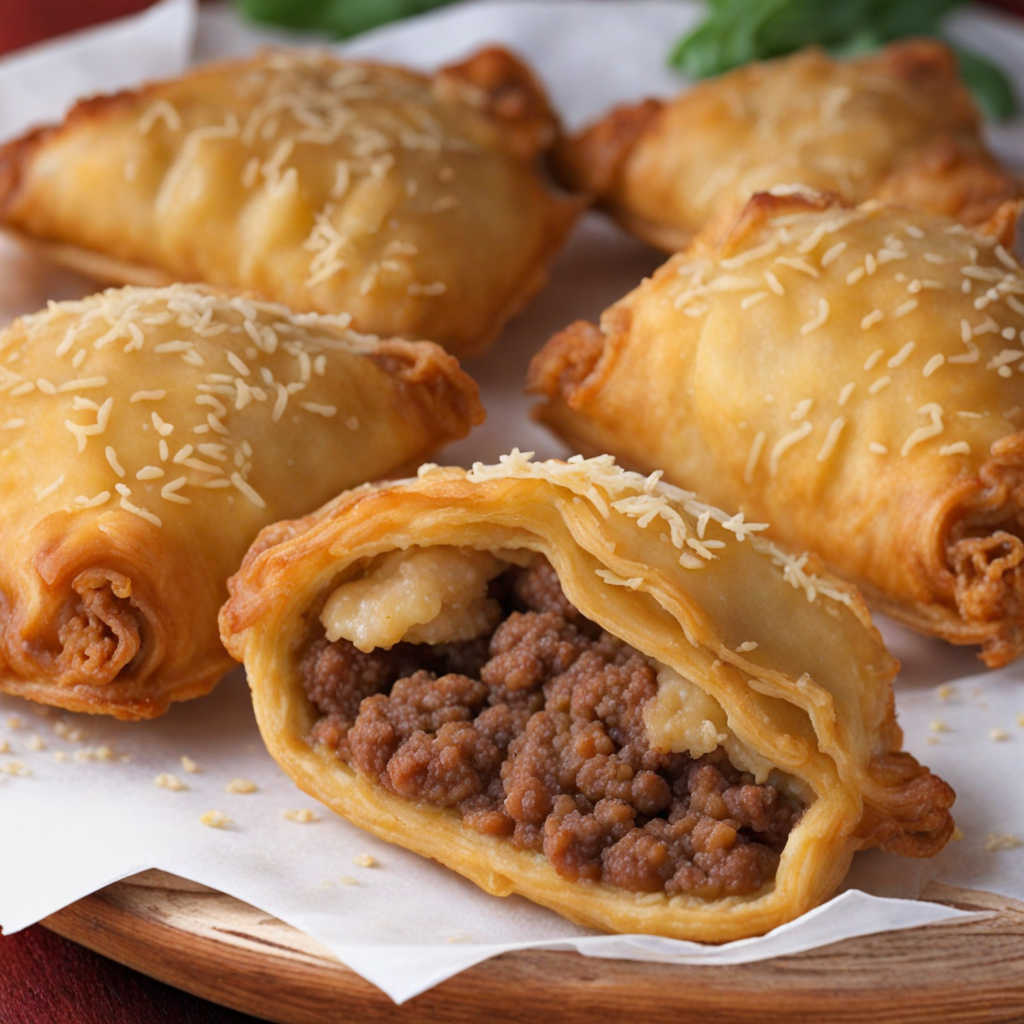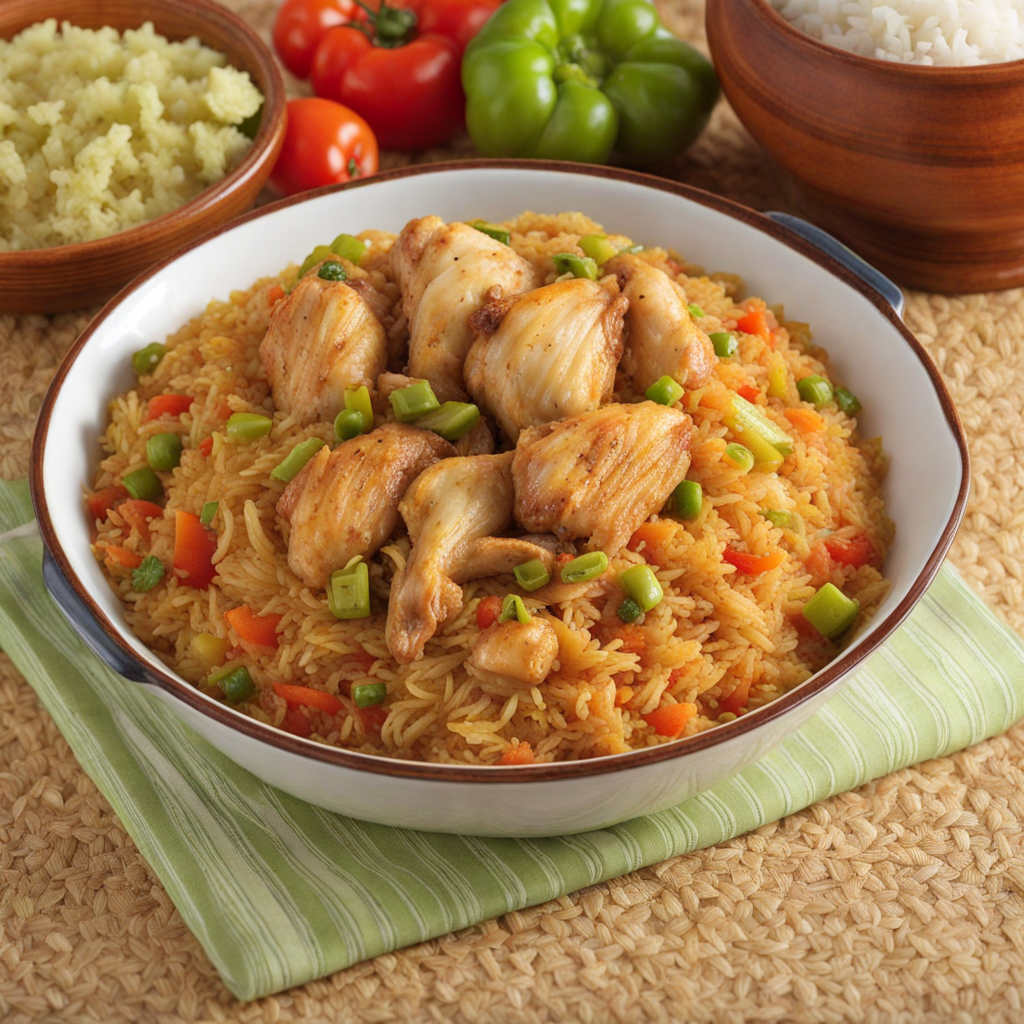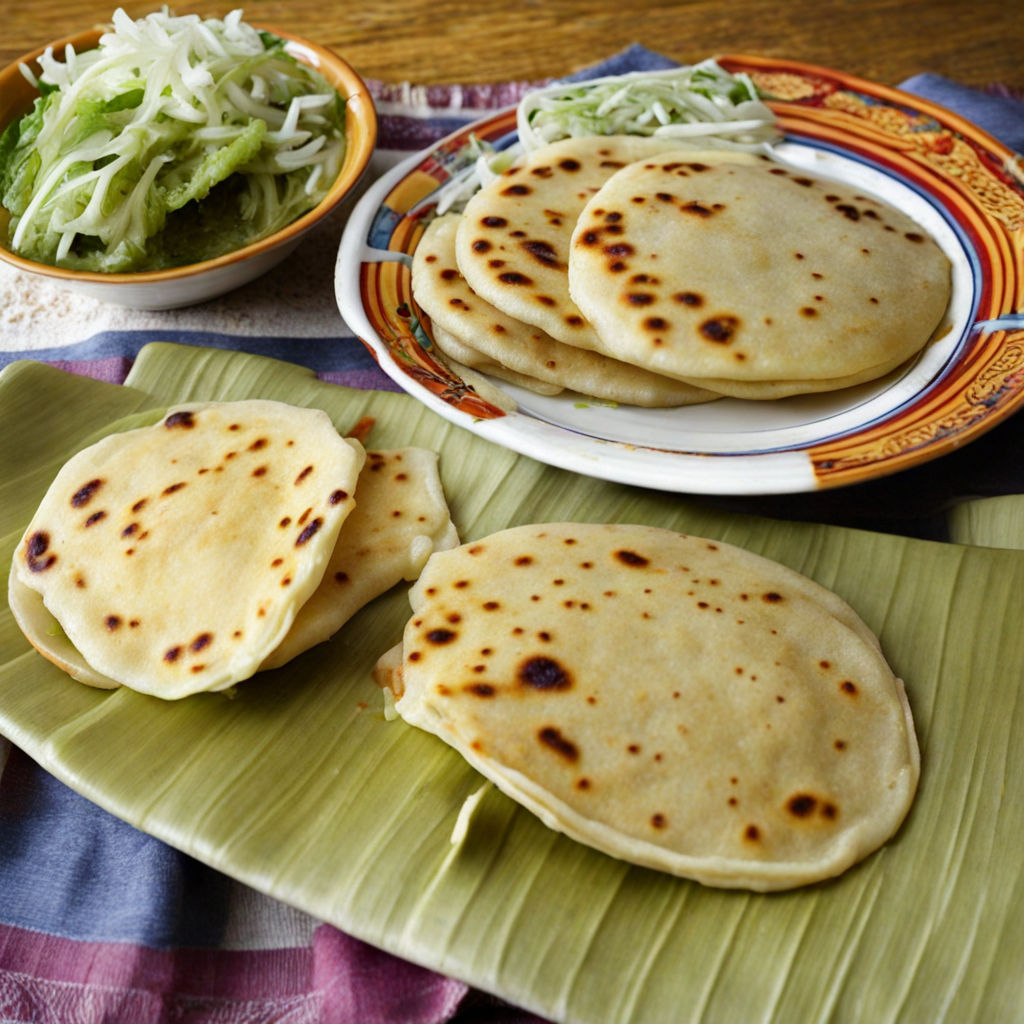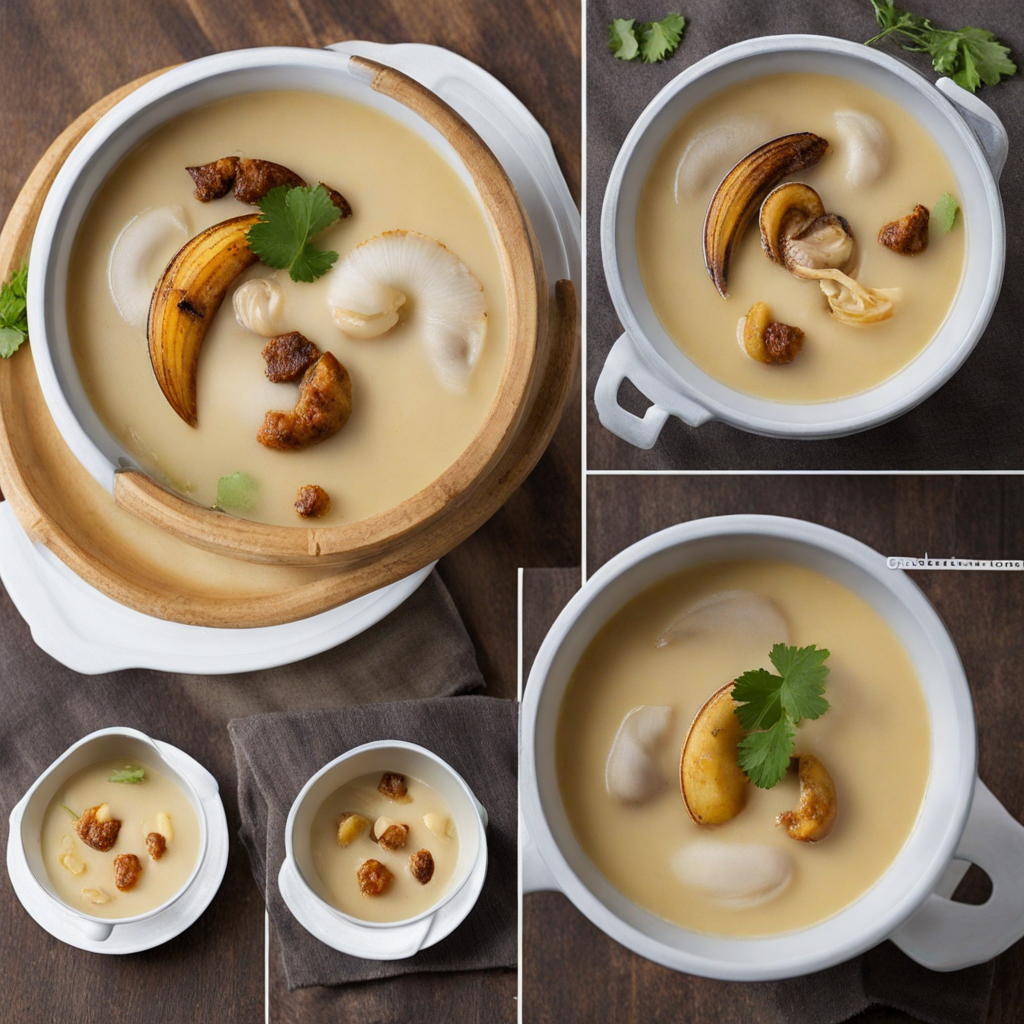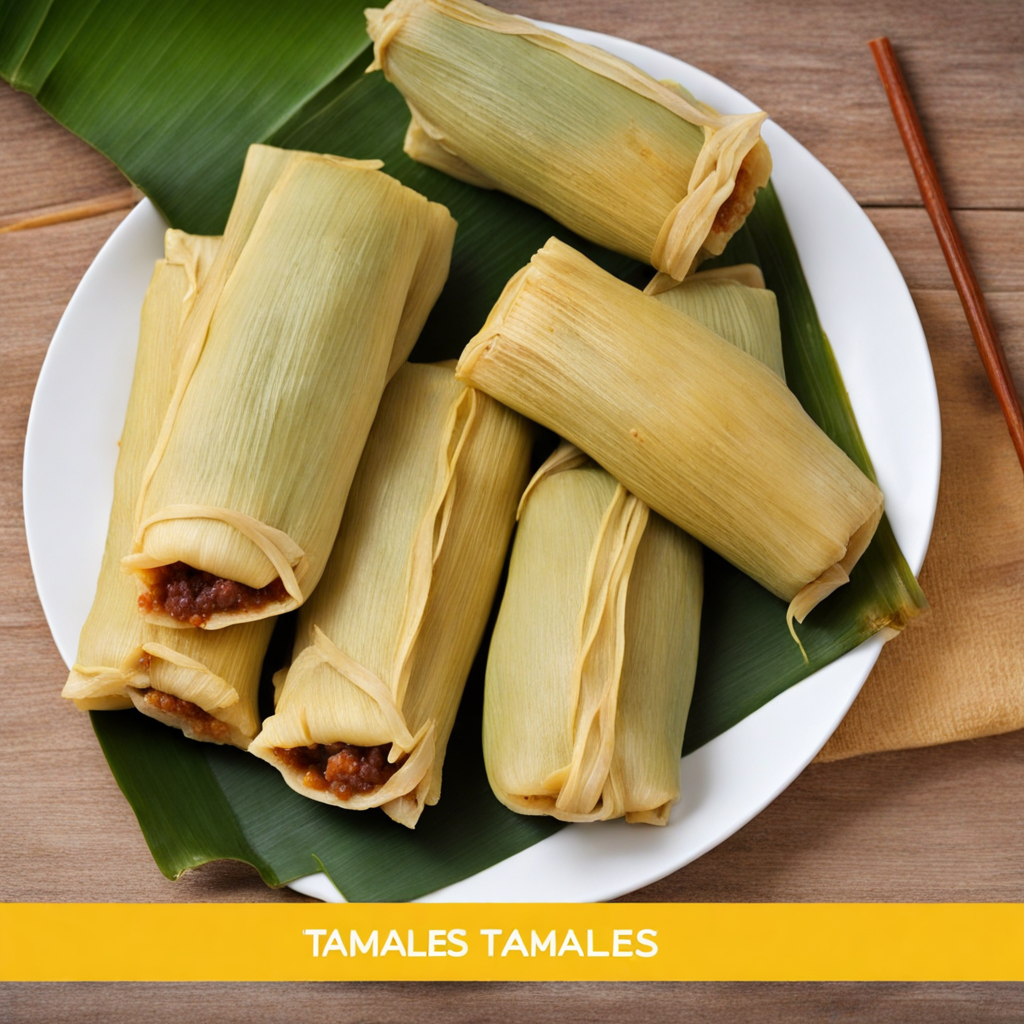Pastelitos de Carne
Pastelitos de Carne are a delightful culinary treasure from Honduras, known for their rich flavors and satisfying textures. These savory pastries are typically filled with a mixture of ground beef, spices, and sometimes additional ingredients like olives or hard-boiled eggs, creating a symphony of taste in every bite. The dough is made from a combination of flour, water, and a touch of lard, which gives it a wonderfully flaky and tender quality when baked or fried. The golden-brown exterior is not just visually appealing; it also provides a satisfying crunch that contrasts beautifully with the juicy, seasoned filling inside. Each bite of Pastelitos de Carne is an exploration of Honduran culinary heritage, as the spices used in the filling often include cumin, garlic, and black pepper, infusing the meat with a warmth and depth that is both comforting and enticing. The addition of olives or other local ingredients can add a surprising twist, enhancing the flavor profile and making each pastelito unique. They are often enjoyed as a snack or appetizer, perfect for sharing with friends and family during gatherings or celebrations. Whether you choose to enjoy them straight out of the fryer, with a side of salsa or a refreshing coleslaw, or baked to a crisp perfection, Pastelitos de Carne offer an unforgettable taste experience. Their versatility allows them to be served in various settings, from casual street food stalls to festive occasions. Discovering Pastelitos de Carne is not just about indulging in a delicious treat; it’s also about embracing the vibrant culture of Honduras and its rich culinary traditions.
How It Became This Dish
The History of Pastelitos de Carne: A Culinary Treasure of Honduras Honduras is a country rich in cultural diversity and culinary traditions, with its food reflecting a blend of indigenous heritage and influences from Spain, Africa, and the Caribbean. Among its many gastronomic delights, Pastelitos de Carne stand out as a beloved snack that has captured the hearts and palates of both locals and visitors alike. These savory meat pastries, known for their flaky crust and flavorful filling, tell a story of tradition, community, and the evolution of Honduran cuisine. Origins: A Fusion of Cultures The history of Pastelitos de Carne can be traced back to the broader context of Central American cuisine. The indigenous peoples of Honduras, including the Lenca and Maya, incorporated maize and beans into their diets long before European contact. However, with the arrival of the Spanish in the 16th century, new ingredients such as wheat flour, beef, and spices were introduced, which would significantly influence the local culinary landscape. The word "pastelito" itself derives from the Spanish term for "small pastry." The adaptation of filling meat into a doughy shell mirrors similar culinary practices found in various cultures around the world, such as empanadas in Argentina and calzones in Italy. In Honduras, Pastelitos de Carne became a unique expression of the nation’s identity, blending indigenous ingredients with European techniques. Ingredients and Preparation Traditionally, Pastelitos de Carne are made using a simple dough of wheat flour, lard, and salt, which is rolled out and filled with a seasoned mixture of ground beef, onions, bell peppers, and spices. The filling may also include olives, hard-boiled eggs, or even various herbs, providing a personal touch to each family’s recipe. After filling, the dough is folded over and crimped, then either baked or fried until golden brown and crispy. The preparation of Pastelitos de Carne often serves as a communal activity, with families gathering to make them in large batches, especially during celebrations and holidays. This aspect of food preparation reinforces the importance of community in Honduran culture, where sharing meals is an integral part of social life. Cultural Significance Pastelitos de Carne hold a special place in Honduran cuisine, often enjoyed as a street food snack, appetizer, or part of a festive meal. They are particularly popular during festivals, family gatherings, and national holidays, symbolizing joy and togetherness. For many Hondurans, these pastries evoke nostalgia, representing cherished memories of home-cooked meals and family traditions. In rural areas, Pastelitos de Carne are a convenient source of sustenance for farmers and laborers, providing a hearty meal that can be easily transported. In urban settings, they are a popular treat sold by street vendors, showcasing the adaptability of this dish to various contexts. The versatility of Pastelitos de Carne ensures their relevance in modern Honduran society, as they can be enjoyed by people of all ages and backgrounds. Evolution and Modern Variations As Honduras has modernized and globalized, the recipe and preparation of Pastelitos de Carne have evolved. While traditional versions remain popular, chefs and home cooks alike have begun experimenting with different fillings, including chicken, pork, and even vegetarian options. This evolution reflects a broader trend in culinary arts, where traditional dishes are being reinterpreted to suit contemporary tastes and dietary preferences. In addition to variations in filling, the method of preparation has also diversified. While many still prefer the classic fried or baked versions, some have turned to healthier alternatives such as air-frying or using whole-grain flour for the dough. These changes indicate that Pastelitos de Carne are not just a relic of the past but a living dish that continues to adapt to modern culinary practices. Global Recognition In recent years, the popularity of Pastelitos de Carne has extended beyond the borders of Honduras. As diaspora communities grow and cultural exchange increases, these pastries have found their way onto menus in Latin American restaurants around the world. Food festivals and cultural events celebrating Honduran heritage often feature Pastelitos de Carne, introducing them to new audiences and fostering appreciation for this traditional dish. Social media has also played a significant role in the global recognition of Pastelitos de Carne. Food bloggers and influencers share recipes, cooking tips, and personal stories related to these pastries, contributing to their growing popularity. Through platforms like Instagram and TikTok, Pastelitos de Carne have become a symbol of Honduran culture, showcasing the country’s vibrant food scene to a global audience. Conclusion: A Culinary Legacy Pastelitos de Carne are more than just a delicious pastry; they represent the rich tapestry of Honduran history, culture, and community. Rooted in a blend of indigenous and European culinary traditions, these savory treats have evolved over time, adapting to the changing tastes and lifestyles of the people who cherish them. Whether enjoyed at a roadside stand, during a family gathering, or at a festive celebration, Pastelitos de Carne continue to hold a special place in the hearts of Hondurans and food lovers around the world. As we explore the history and significance of Pastelitos de Carne, we recognize them as a reflection of the resilience of cultural identity, the importance of family and community, and the enduring power of food to bring people together. In every bite of a Pastelito, one can taste not only the flavors of Honduras but also the shared stories and traditions that connect generations. As the world continues to embrace the diversity of its culinary heritage, Pastelitos de Carne will undoubtedly remain a cherished symbol of Honduran gastronomy for years to come.
You may like
Discover local flavors from Honduras


